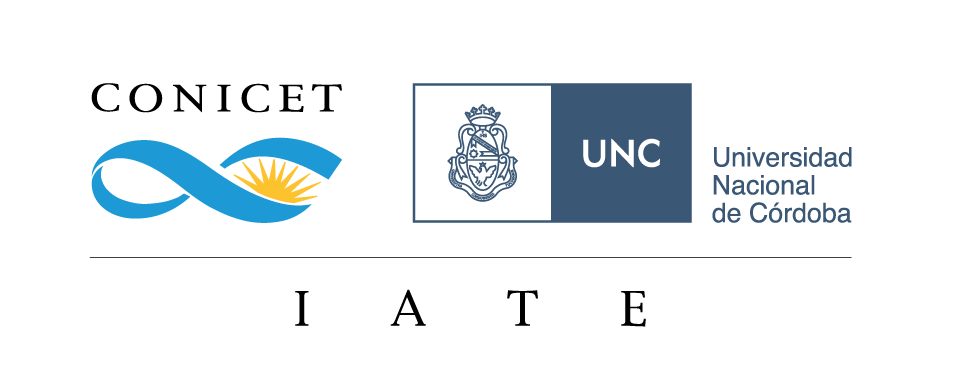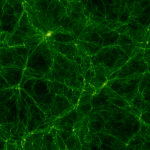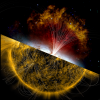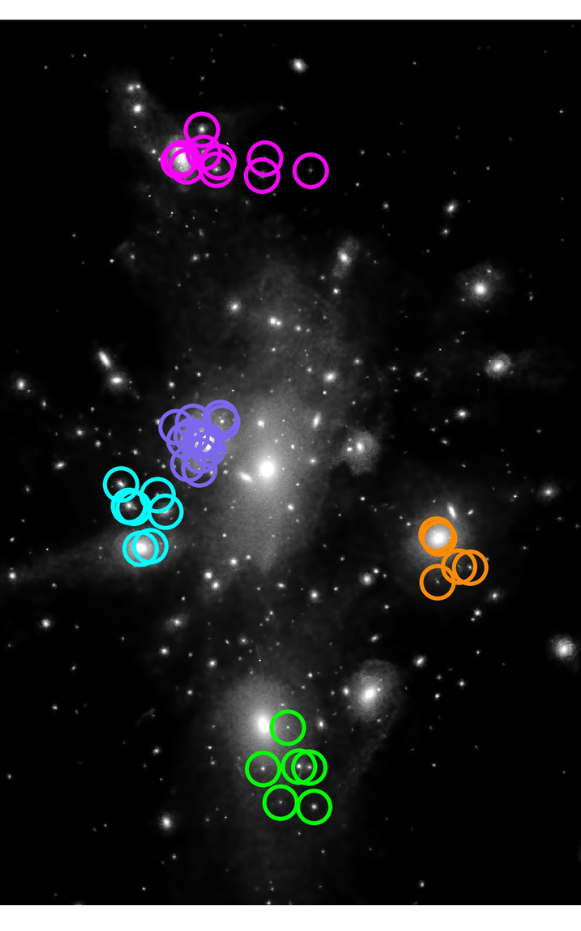
This scientific work was developed by José Benavides, Mario Abadi and Andrea Biviano. The first two professionals belong to the Instituto de Astronomía Teórica y Experimental (IATE) of CONICET and the Universidad Nacional de Córdoba (UNC) and the Observatorio Astronómico de Córdoba (OAC), while Andrea Biviano does research at the Observatorio Astronómico de Trieste, Italy.
By Facundo Rodriguez
facundo.rodriguez@unc.edu.ar
A galaxy cluster comprises hundreds or thousands of galaxies. They form through a process known in astronomy as 'hierarchical growth', whereby smaller structures join to form larger structures. In other words, clusters are formed by incorporating individual galaxies and groups of galaxies.
If galaxies were people, we could think of clusters as cities where these migrants settle. Some arrive alone, some arrive in pairs or small groups, and some arrive in larger groups. For a while, they store information about their origin, and then slowly lose it as they mix with the rest of the galaxies in the cluster. The researchers thus exemplify some ideas that inspired their work. They also explain that it is possible to tell whether a set of galaxies comes from the same group by analysing whether they are close to each other and whether they have similar velocities. This would make it possible to retrieve information about the groups that were attached to each other.
Groups within clusters
In earlier work, José and Mario had investigated in simulations how clusters form because of galactic migrations. And, following a visit to IATE by the Italian researcher Andrea Biviano, they discovered that some of their analyses could be connected to observational results. So they began to jointly develop a new method for identifying substructures within galaxy clusters.
The work was published in the Astronomy & Astrophysics journal and it is part of José’s PhD thesis, based on the previous work, but now with a somewhat inverse analysis: from the galaxies that now form the cluster, they tried to recover information on how they came to form it. Using the positions and velocities of the galaxies in simulations, they could establish with very good reliability which galaxies had entered the cluster together. In addition, they could determine that these substructures within the cluster were disassembling and, therefore, those that had entered the cluster longer ago were less grouped together and were losing connection with their original group. While this is not the only method to explore these substructures, it proved to be efficient when evaluated with state-of-the-art cosmological simulations.
Mario Abadi stresses: "This identification tool has been made available in a repository for use by colleagues interested in doing this type of analysis and who can carry out their studies".
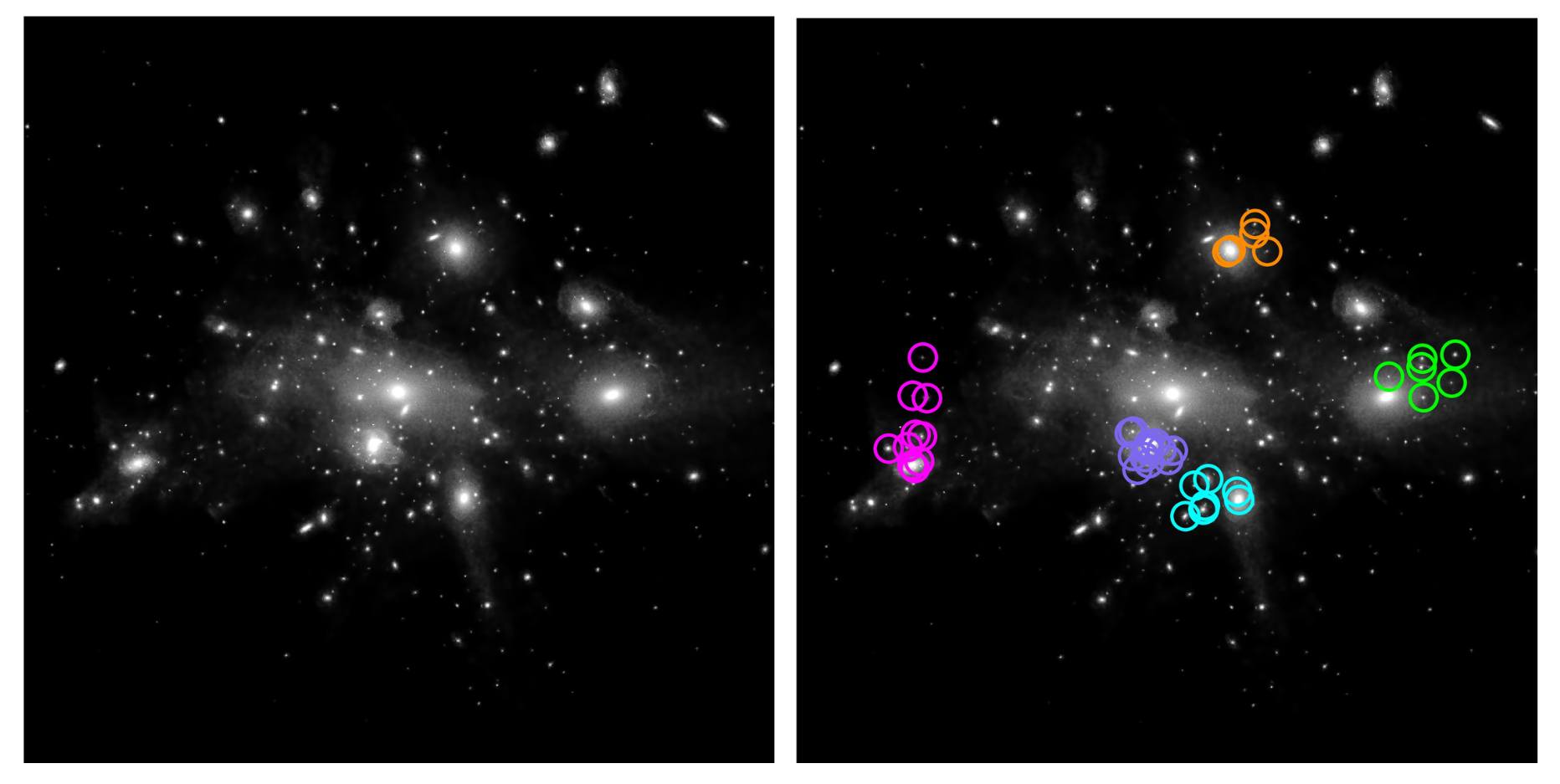
On the left, one of the clusters was analysed in the simulation. On the right, the same cluster with 5 of the 17 structures identified. (credits: José Benavides)
In addition to evaluating the technique in simulations, the authors implemented its identification in observations. In particular, they applied it to the famous Bullet Cluster, which is formed by two colliding clusters and is one of the best pieces of evidence for the existence of dark matter.
José Benavides explains: "The method allows us to identify the main substructure of the cluster (which gives the cluster its name) together with some additional substructures along the collision axis. However, the most novel feature is the identification of some substructures along the main axis of the cluster and almost perpendicular to the bullet axis".

Image of the Bullet Cluster showing its galaxies and superimposed on them, in blue, the distribution of matter (obtained with gravitational lenses); and, in pink, the X-ray emission. (Credits: Rayos X: NASA/Cxc/Cfa/M.Markevitch et al.; Mapa De Lentes: NASA/Stsci; ESO Wfi; Magellan/U.Arizona/D.Clowe et al.; Optical: Nasa/Stsci; Magellan/U.Arizona/D.Clowe et al.).
In the future, new implementations of the method may be made in observations using information from the galaxies that form the Coma, Virgo, or other clusters. In addition, the data collected from the substructures that make up each cluster could help, for example, in certain dynamical studies of galaxy clusters and also in estimates of their masses.
Inter-institutional visits
In addition to Andrea Biviano's visit to IATE, this work was the result of a research stay of José Benavides and Mario Abadi at the Astronomical Observatory of Trieste, Italy. Although these stays lasted only a few months, they were very intense and productive and gave rise to relevant results that were later published.
It is important to mention that this possibility is due to the fact that IATE belongs to the LACEGAL network (Latin American Chinese, European Galaxy Formation Network), which is funded by the European Union and allows the exchange of researchers between institutions in Latin America, Europe and China.Latin American Chinese European Galaxy Formation Network), financiada por la Unión Europea y permite el intercambio de investigadores entre instituciones de Latinoamérica, Europa y China.
Scientific publication |
| DS+: A method for the identification of cluster substructures
Authors | José A. Benavides (IATE, CONICET/UNC, Argentina), Mario. G. Abadi (IATE, CONICET/UNC, Argentina) & Andrea Biviano (INAF, Osservatorio Astronomico di Trieste, Italy). |
